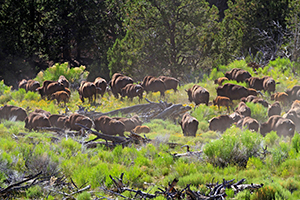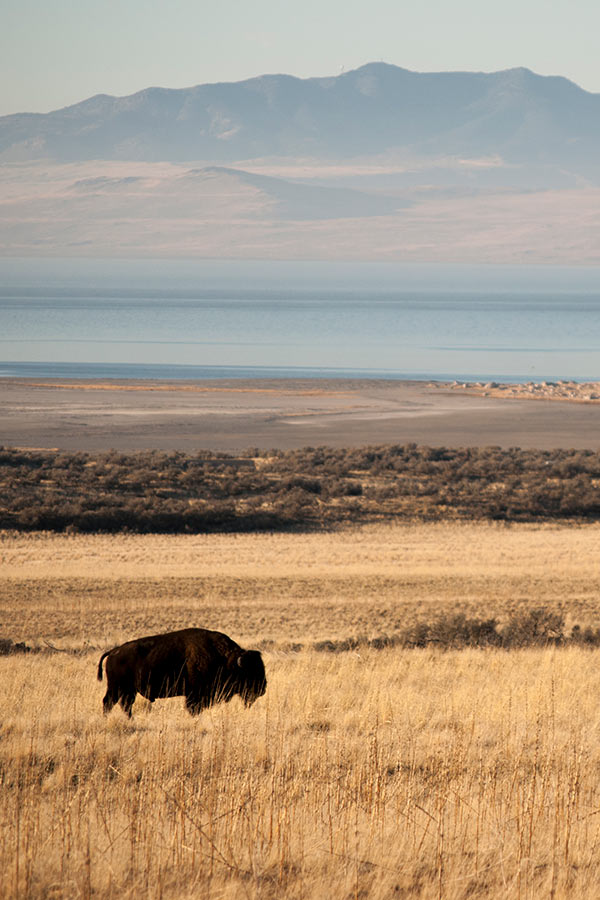Be aware › Bison
Welcome to bison country

Some things you should know about bison
American bison (Bison bison) — also commonly called buffalo — are the largest land-dwelling animal in North America. Adult male bison (called bulls) can weigh over 2,000 pounds at maturity, can reach over 7 feet tall at the shoulder and are up to 12 feet long from snout to tail. Female bison (called cows) are generally smaller than bulls. Both bull and cow bison have horns.
Bison have excellent senses of hearing, vision and smell. An entire herd can stampede if it is startled, and bison can reach speeds of 35 miles per hour. Bison are also excellent swimmers and can travel long distances through difficult terrain. Due to their large size, bison can be dangerous when they feel threatened.
Bison habitat

Although millions of bison once roamed Utah’s grasslands, they were hunted to near extinction in the 1800s. Utah currently has just over 1,300 wild bison located in three areas of the state: Antelope Island, the Henry Mountains and the Book Cliffs.
There are two wild, free-ranging bison herds that descended from animals reintroduced to the Henry Mountains in the 1940s, and more recently the Book Cliffs in 2008. There is another large herd of bison — varying from 500–700 animals depending on the time of year — located at Antelope Island State Park, and it is quite common to encounter bison along the park’s roads, trails and fields.
Bison feed
Although bison prefer wide-open grasslands and meadows, they have adapted to forage at many elevations. They are year-round grazers, and feed primarily on grasses, along with lichen, flowering plants, woody plants and leaves.
A bison’s distinctive protruding shoulder hump is made up of muscle. These large neck and shoulder muscles allow bison to swing their heads from side-to-side to push snow off of foraging patches (unlike deer and elk that scrape snow away with their front feet).
How to prevent incidents with bison
Give bison plenty of room to roam. While they may seem docile when they are grazing, they can react quickly and charge at perceived threats. If you startle them, it may cause an entire herd to stampede. Bison are mostly active during the day and at dusk, but may be active through the night, as well.
How to avoid making a bison aggressive if you encounter one:

- If you see a bison and it stops what it is doing and starts paying attention to you, you are too close and should slowly back away.
- If a bison is in the middle of the road, wait for it to pass. Do not get out of your vehicle.
- If a bison is on the side of the road, very slowly drive past it. But again, stay inside your vehicle.
- If you see a bison in the distance, do not walk across the rangeland to get closer to it. Take photos from a safe distance.
- If you are hiking and a bison is close to or on the trail, you should either back away and return the way you came, or leave the trail and give the animal a very wide berth when passing it. It is OK to go off the trail if your safety is at risk.
Planning to visit Antelope Island State Park? Please review their bison safety tips, and keep your distance from bison and other wildlife on the island.

